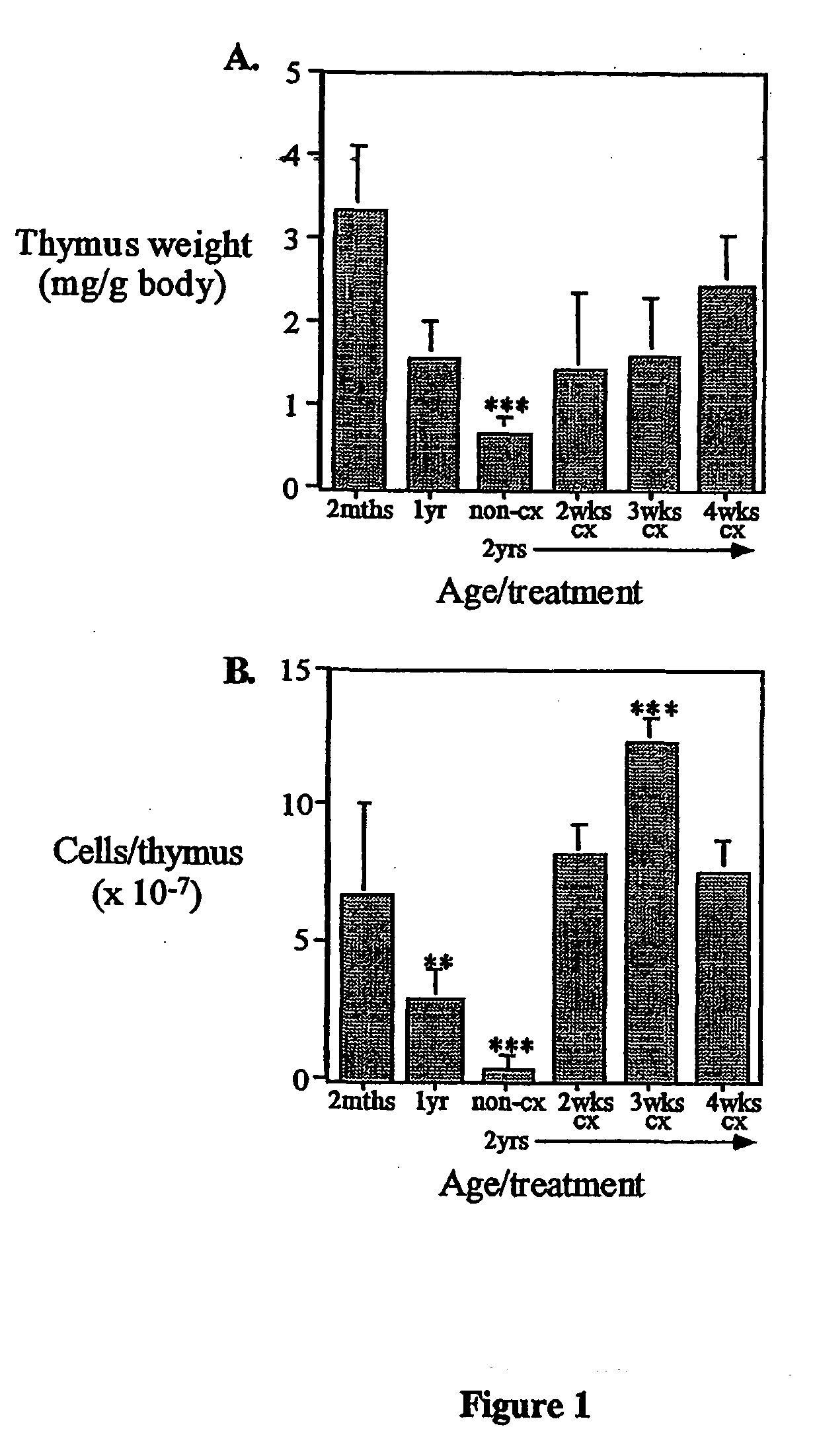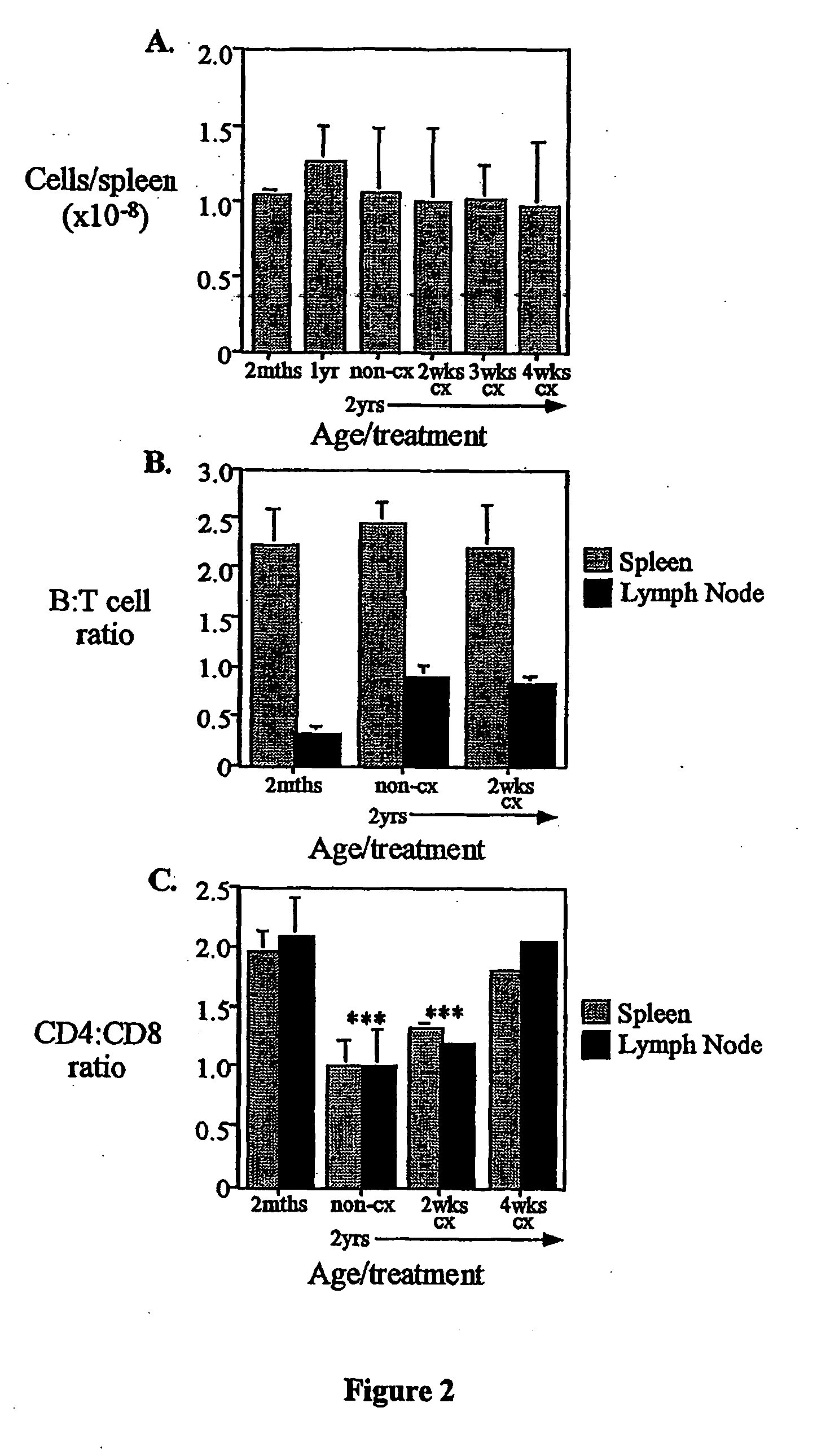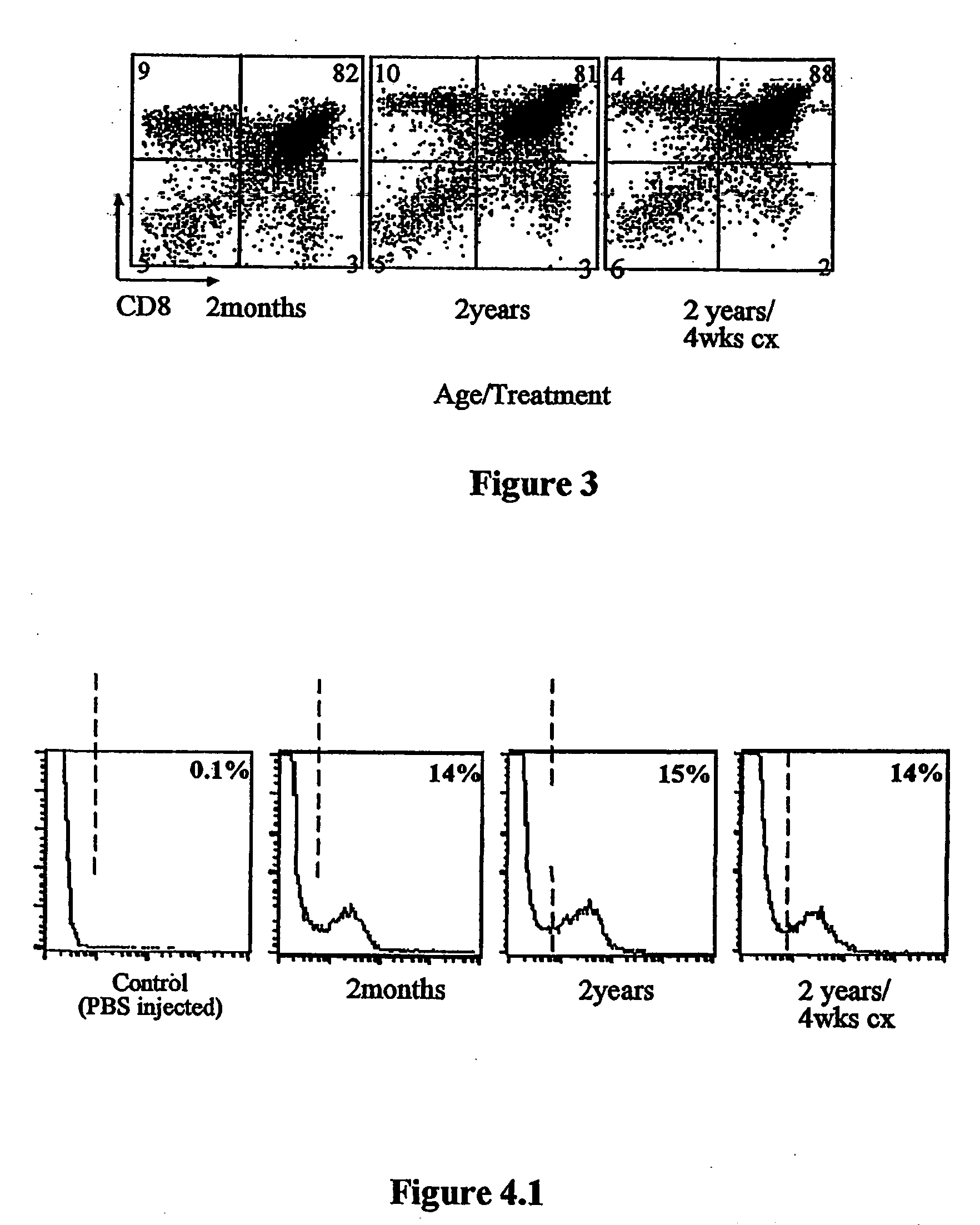Treatment of T cell disorders
a t cell disorder and treatment method technology, applied in immunological disorders, antibody medical ingredients, dsdna viruses, etc., can solve the problems that hsc stem cell therapy has met little or no success to date, and achieves the effects of increasing the uptake of blood-derived hsc, and reducing the risk of hsc infection
- Summary
- Abstract
- Description
- Claims
- Application Information
AI Technical Summary
Benefits of technology
Problems solved by technology
Method used
Image
Examples
example 1
Reversal of Aged-Induced Thymic Atrophy
Materials and Methods
Animals
[0058] CBA / CAH and C57Bl6 / J male mice were obtained from Central Animal Services, Monash University and were housed under conventional conditions. Ages ranged from 4-6 weeks to 26 months of age and are indicated where relevant.
Castration
[0059] Animals were anaesthetised by intraperitoneal injection of 0.3 ml of 0.3 mg xylazine (Rompun; Bayer Australia Ltd., Botany NSW, Australia) and 1.5 mg ketamine hydrochloride (Ketalar; Parke-Davis, Caringbah, NSW, Australia) in saline. Surgical castration was performed by a scrotal incision, revealing the testes, which were tied with suture and then removed along with surrounding fatty tissue.
Bromodeoxyuridine (BrdU) Incorporation
[0060] Mice received two intraperitoneal injections of BrdU (Sigma Chemical Co., St. Louis, Mo.) (100 mg / kg body weight in 100 μl of PBS) at a 4 hour interval. Control mice received vehicle alone injections. One hour after the second injection...
example 2
Reversal of Chemotherapy- or Radiation-Induced Thymic Atrophy
[0092] Castrated mice (either one-week prior to treatment, or on the same day as treatment), showed substantial increases in thymus regeneration rate following irradiation or cyclophosphamide treatment.
[0093] In the thymus, irradiated mice show severe disruption of thymic architecture, concurrent with depletion of rapidly dividing cells. Cortical collapse, reminiscent of the aged / hydrocortisone treated thymus, reveals loss of DN and DP thymocytes. There is a downregulation of αβ-TCR expression on CD4+ and CD8+ SP thymocytes—evidence of apoptosing cells. In comparison, cyclophosphamide-treated animals show a less severe disruption of thymic architecture, and show a faster regeneration rate of DN and DP thymocytes.
[0094] By 1 week post-treatment castrated mice showed significant thymic regeneration even at this early stage (FIGS. 6, 7 and 8). In comparison, non-castrated animals, showed severe loss of DN and DP thymocytes...
example 3
Thymic Regeneration Following Inhibition of Sex Steroids Results in Restoration of Deficient Peripheral T Cell Function
[0097] To determine whether castration can enhance the immune response, Herpes Simplex Virus (HSV) immunisation was examined as it allows the study of disease progression and role of CTL (cytotoxic) T cells. Castrated mice have a qualitatively and quantitatively improved responsiveness to the virus. Mice were immunised in the footpad and the popliteal (draining) lymph node analysed at D5 post-immunisation. In addition, the footpad is removed and homogenised to determine the virus titre at particular time-points throughout the experiment.
[0098] At D5 post-immunisation, the castrated mice have a significantly larger lymph node cellularity than the aged mice (FIG. 10a). Although no difference in the proportion of activated (CD8+ CD25+) cells was seen with age or post-castration, activated cell numbers within the lymph nodes are significantly increased with castration...
PUM
| Property | Measurement | Unit |
|---|---|---|
| Cytotoxicity | aaaaa | aaaaa |
Abstract
Description
Claims
Application Information
 Login to View More
Login to View More - R&D
- Intellectual Property
- Life Sciences
- Materials
- Tech Scout
- Unparalleled Data Quality
- Higher Quality Content
- 60% Fewer Hallucinations
Browse by: Latest US Patents, China's latest patents, Technical Efficacy Thesaurus, Application Domain, Technology Topic, Popular Technical Reports.
© 2025 PatSnap. All rights reserved.Legal|Privacy policy|Modern Slavery Act Transparency Statement|Sitemap|About US| Contact US: help@patsnap.com



